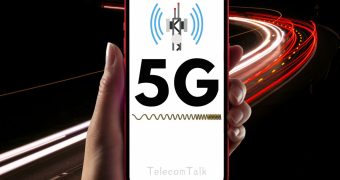
India's top telecom operators may further increase their tariffs by the end of this year as part of ongoing tariff repair efforts across the industry. This move is likely to serve as a key catalyst and enhance revenue visibility for the sector, according to Bernstein. "The current cycle in the Indian telecom industry is marked by optimism regarding tariff repair and a return to growth," the firm said.
Also Read: Telecom Industry Seeks Additional Spectrum to Sustain 5G, IoT Growth: Report
Tariff Hike on the Horizon
"We expect the tariff hike to continue over the medium term to reach Rs 300 by FY27. Tariff Hike Likely in end 2025. We anticipate a tariff hike in November/December 2025, in line with ongoing tariff repair efforts across the industry. This move could serve as a key catalyst and enhance revenue visibility for the sector," analysts at Bernstein stated in a research report dated Wednesday, 16 April.
Revenue Growth Outlook for Bharti and Jio
The global brokerage firm projects mid-to-high teen revenue growth for leading telecom companies — Bharti and Jio — for 2025 to 2027, driven by strong average revenue per user (ARPU) growth and steady subscriber additions.
Furthermore, the firm said, "India Telcos, led by Bharti are best positioned as growth accelerates led by ARPU growth, improving balance sheet and increasing free cash flows. Bharti has outperformed on a relative basis the NIFTY and all the Asia peers over last three months."
Government Support for Vodafone Idea
The report also highlighted the Indian government's support for Vodafone Idea by converting spectrum dues into equity, increasing its stake from 22.6 percent to 48.99 percent. This move is part of the broader telecom reforms announced in September 2021. "The equity conversion signals the Government's commitment to preserve a three-player market structure and increases probability of price discipline and future tariff hike," the report noted.
Strong Fundamentals
The brokerage firm says it continue to see strong fundamentals for Indian telecom. "The industry consolidation led by Jio has led to market share gains for top two players. Regulatory reforms (AGR) have brought in clarity for the industry. We are now in a monetisation cycle led by tariff hikes and ARPU expansion."
Also Read: Airtel, Jio, and Vodafone Idea: Data Usage Trends and ARPU in Q3FY25
ARPU Trends and 5G Coverage
In Q3FY25 (October–December 2024), Bharti Airtel recorded the highest ARPU increase, reaching Rs 245 — up approximately 5.2 percent quarter-on-quarter — driven by the impact of previous tariff hikes, upgrades from feature phones to smartphones, prepaid to postpaid migrations, data monetisation, and international roaming growth. 5G coverage expansion continues as planned. Jio's ARPU stood at Rs 203, while Vi's ARPU was Rs 163, supported by the sustained impact of tariff hikes and an improved subscriber mix. The residual impact of the July 2024 tariff hike is still playing out, according to Bernstein.
Monetisation Cycle
"With urban 5G coverage rollout completed, we expect the operators to shift focus on ARPU and return ratio's (ROCE) improvement. Furthermore, as 5G matures, consumer demand grows, and new use cases emerge, the industry should gradually see a new revenue stream and return on its investments," the report said.
The brokerage firm anticipates further market consolidation by FY27, with Jio expected to hold a 48 percent revenue share and Bharti Airtel 38 percent. Subscriber share is projected at 47 percent for Jio and 35 percent for Bharti.
"We expect Bharti to post a significant rise in ROIC by FY26, driven by revenue growth supported by tariff hikes and 5G monetisation," Bernstein added.
Subscriber Dynamics
For Jio, gross additions were healthy, with monthly churn normalising, resulting in a net quarter-on-quarter addition of 3 million subscribers. Jio's total subscriber base stood at 482 million in Q3FY25, up from 479 million in Q2FY25. Bharti's net subscriber base grew by 1.4 percent quarter-on-quarter to 357 million (a net addition of 5 million). Vi's subscriber base continued to decline to 200 million, down 2.4 percent quarter-on-quarter (a net loss of 5 million), despite efforts to expand 4G coverage and capacity, the report noted.
4G/5G Monetisation: Monetising 4G and 5G: Key Takeaways to Date and What’s Next?
Bharti Airtel's 5G and FWA Strategy
The brokerage firm noted that for Bharti Airtel, the broadband capex will be higher in the next few quarters as the company will be transitioning to Standalone 5G on FWA. "However, for mobile business Bharti Airtel will decide to move from NSA to SA in next 3-4 years depending on load in spectrum band and thus will work on a hybrid model in the next few years – NSA for consumer business and SA for FWA and Enterprise segment."
"We believe Bharti is well positioned to compete with Jio in the 5G space, driven by higher ARPU," Bernstein concluded, setting a revised price target of Rs 2,020 (up from Rs 1,900 previously) and maintaining an Outperform (OP) rating.















